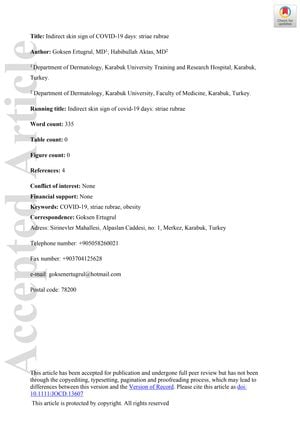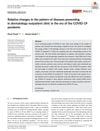Indirect Skin Sign of COVID-19 Days: Striae Rubrae
July 2020
in “
Journal of Cosmetic Dermatology
”

TLDR The COVID-19 pandemic led to more young people getting red stretch marks due to lifestyle changes like less activity and quick weight gain.
During the COVID-19 pandemic, a significant increase in the diagnosis of striae rubrae, particularly among individuals under 20 years of age, was observed in dermatology outpatient clinics. The frequency of patients with striae rubrae rose fourfold one month after the first COVID-19 case was reported in the country, from 0.1% to 0.4%. This increase is attributed to lifestyle and dietary changes resulting from school closures, the shift to online education, and curfews for those under 20, leading to sedentary lifestyles and rapid weight gain. The authors suggest that the pandemic's indirect effects, such as the potential for a striae rubrae outbreak, should not be overlooked, as it can pose a serious public health issue without a fully effective treatment and may negatively impact mental health.
